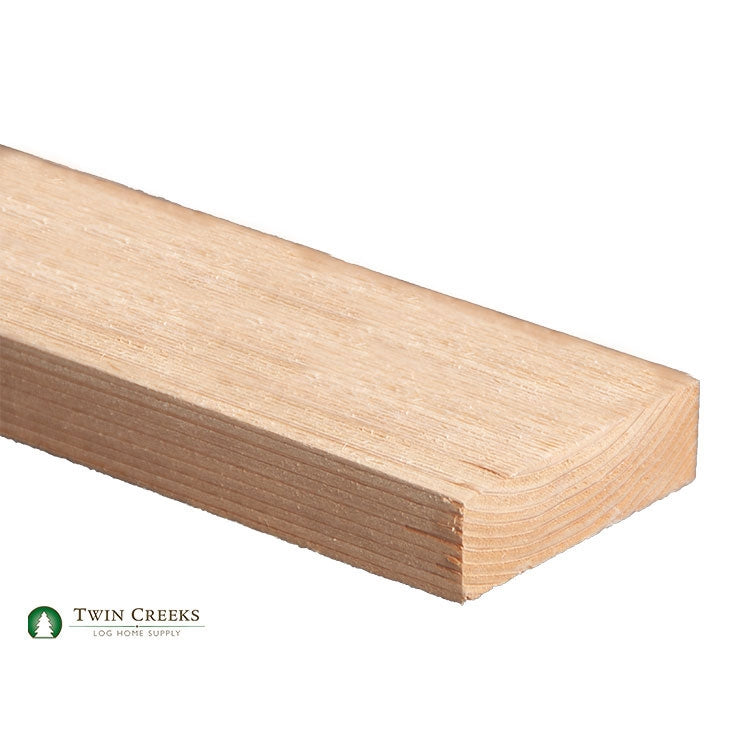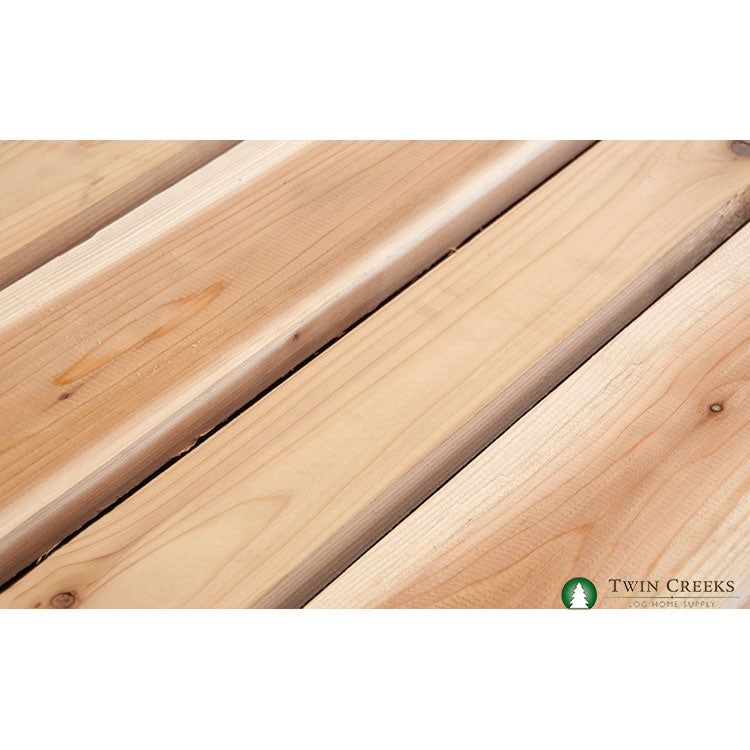Details
Inland Red Cedar S1S2E Trim Boards
Perfect for interior and exterior projects alike, Inland Red Cedar has a beautiful lightly-striped, honey coloring that will add dimension, as well as aesthetic interest to your project. Grown in the dry, higher elevations of the Montana, Idaho, and Eastern British Columbia mountains, Inland Red Cedar is typically used for moldings, fencing, decking, siding, and other projects that don’t require large diameter beams or timbers. As one of the most durable soft woods, Inland Red Cedar is a low maintenance and versatile material that will be a beautiful addition to your home.
• Available Lengths: 8’, 10’, 12’, and 16’ – specified piece counts are available depending upon current stock at time of order
• Grade: #1 Appearance Grade
• Texture: Sanded on 1 side and 2 edges (S1S2E) – the non-sanded face is milled to a rough texture.
• Drying Type: Kiln-dried
• Fastener Type: Stainless Steel Finish Nail
• Typical Weight: 1.5 lbs per board foot
• Dimensions: Our trim boards are cut to Standard Dimensions, which means that the board’s finished dimensions will be slightly smaller than its nominal dimensions.
• Shipping Options: Flat-bed tractor trailer, Roll Back, LTL Carrier – shipping method is determined based on location and order size to minimize cost.
Product Resources:
Quick Facts About Western Red Cedar
8 Reasons Why Western Red Cedar Is The Right Choice For Your Home
How to Finish Western Red Cedar
Take the Cedar Challenge
How to Specify Western Red Cedar
Coverage Calculations:
You can calculate the coverage for the amount of trim needed for your project by using our Tips Page, How Do I Determine How Much Lumber I Need? Please call us if you would like a free takeoff on your project as well.
Preparation Information:
Our Kiln Dried Inland Red Cedar S1S2E Trim is ready for installation once received on your jobsite. However, wood will shrink and swell with any changes in moisture content and weather. To minimize dimensional change after installation, install Inland Red Cedar trim at a moisture content that matches the local climate as closely as possible. If the climate in a particular region causes wood to maintain 8% to 13% moisture content annually, then the most ideal trim would be installed at a moisture content within that range, and the material would be stored, stickered, and protected for a week to ten days prior to application.
Maintenance:
With any unfinished interior wood, applying a quality finish to all surfaces (including the ends) is recommended. An interior finish protects the wood from moisture absorption and UV degradation, and helps prevent any finger stains caused by touching the unfinished wood. On occasion, the trim boards may have a mill glaze that is produced when the material is manufactured through the planer. When mill glaze occurs, it is recommended to remove it by sanding prior to staining or clear coating the wood. Sanding is not recommended as a first option unless every piece is sanded. We offer a wide selection of Interior Finishes that we can recommend based on the final sheen level and look that is desired. Most interior finishes do not have to be recoated or reapplied, depending on the UV exposure to your home. You can find all of the interior stains and finish products that we carry on our Interior Stains page.
Storage Prior To Application:
Until installed, all Inland Red Cedar needs protection from direct sunlight, water saturation, snow, ice, dirt, and other elements. Ideally, the trim boards should be stored in an enclosed building such as a garage prior to use. It is best to store the trim boards flat and off the ground with a vapor barrier so that moisture is not absorbed through the bottom boards of the stack. If stored outside, the siding should be protected with a waterproof covering elevated in the center so that water does not pool on the cover. We also recommend that you do not completely seal the bundle, as good air circulation is required to prevent any blue stain or molding.
Reviews
Product Questions
Product Questions
-
What is the difference between Western Red Cedar and Inland Red Cedar?
Although Western Red Cedar and Inland Red Cedar are the same species, Thuja plicata, they possess a number of differences, primarily in appearance, that can be largely thought of as a matter of grade distinction.
Found primarily in the coastal regions of British Columbia, Oregon, California, and Washington state, Western Red Cedar grows large and fast, producing timbers with a straight grain and few knots. Due to higher rainfall in these coastal areas, Western Red Cedar will often be a bit darker with more consistent coloring. Its large, straight boards and clear appearance make it a perfect choice for siding and paneling.
By contrast, Inland Red Cedar grows in the higher elevations and drier climates of the Western Rocky Mountains. Due to the more arid soil and lack of rainfall, the Inland variety of Red Cedar does not grow as tall or as quickly. It will typically be lighter and more striped in appearance, with a greater number of knots and a less straight grain. Since it does not grow as large as its coastal counterpart, Inland Red Cedar is ideal for moldings, fencing, paneling, and decking.





















